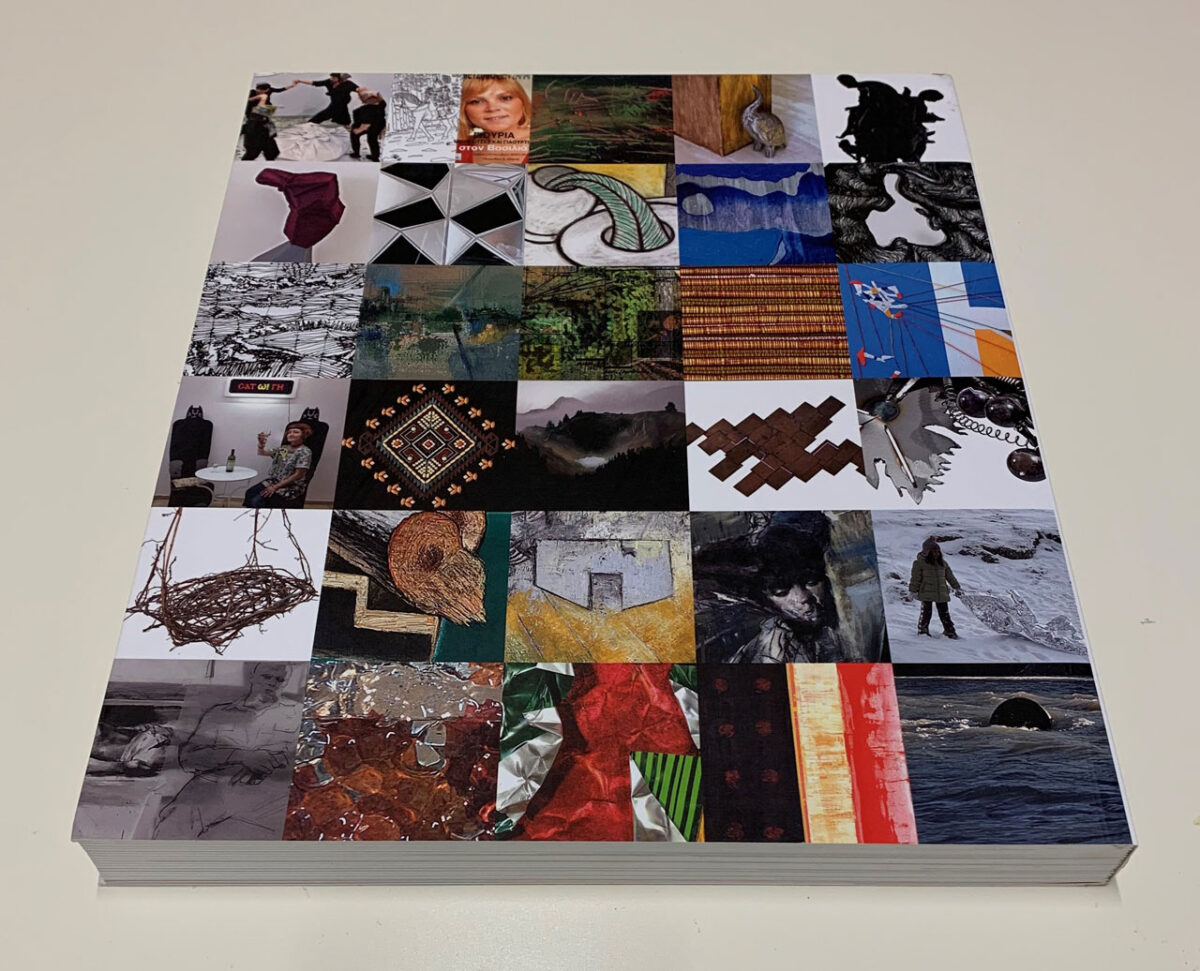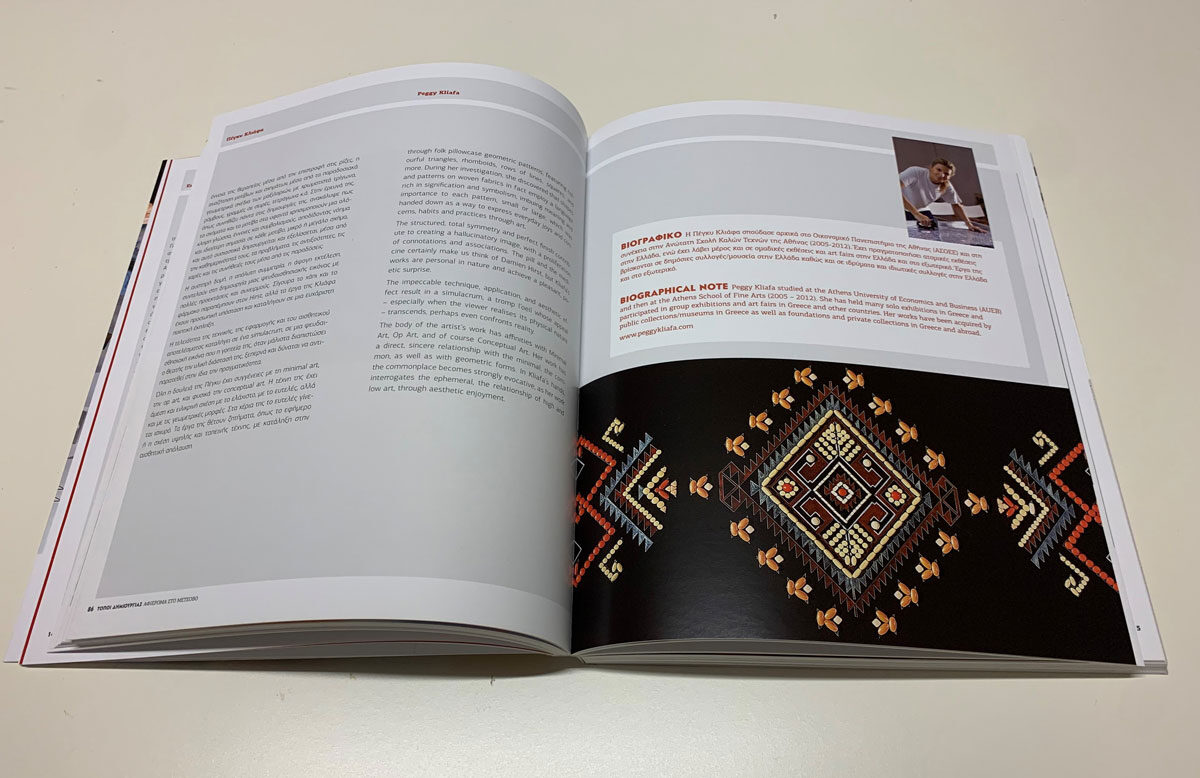CATALOGUE TEXT BY DR. L. TSIKOUTA-DEIMEZI, E. AVEROF MUSEUM, “LANDS OF CREATION”


In Peggy Kliafa’s art, the idea – the conceptual framework – is dominant, with many connotations and readings by the artist, and an astounding technical mastery.
She arrives at her topic, content, and pictorial framework through research, study, and documentation.
The uniqueness of her art lies in the fact that – inspired by Marcel Duchamp’s readymades – she chooses as a key component of her work the pill, or the blister, medicine packaging, or other, lighter and smaller elements, such as foil.
Peggy Kliafa’s work, titled “Pillow”, made especially for this exhibition, is made of pills. It is a pillow made of actual pills and acrylic paint, mounted on MDF, and enclosed in Plexiglas, measuring 63 x 107,5 cm.
Inspired by Metsovo heritage pillows and woven fabrics, it is a horizontal work, as is common for Kliafa; she uses pills of different colours and acrylic-painted sections on MDF. The composition, inspired by pillow patterns, features geometric shapes that create a beautiful, radiant geometric composition. The pillows served many different functions in villages, such as for rest, health, and to decorate house interiors.
There is inherent contrast in this work, since pillows are made of soft fabric, whereas this work is made of hard materials, such as the wooden base and the solid pills, which evoke the patterns of threads and yarns in pillow cases. Peggy investigates the concept of healing through the return to the roots, the search for patterns and shapes through folk pillowcase geometric patterns, featuring colourful triangles, rhomboids, rows of lines, squares, and more. During her investigation, she discovered that shapes and patterns on woven fabrics in fact employ a language rich in signification and symbolism, imbuing meaning and importance to each pattern, small or large, which was handed down as a way to express everyday joys and concerns, habits and practices through art.
The structured, total symmetry and perfect finish contribute to creating a hallucinatory image, with a proliferation of connotations and associations. The pill and the medicine certainly makes us think of Damien Hirst, but Kliafa’s works are personal in nature and achieve a pleasant, poetic surprise.
The impeccable technique, application, and aesthetic effect result in a simulacrum, a tromp l’oeil who’s appeal – especially when the viewer realizes its physical nature – transcends, perhaps even confronts reality.
The body of the artist’s work has affinities with Minimal Art, Op Art, and of course Conceptual Art. Her work has a direct, sincere relationship with the minimal, the common, as well as geometric forms. In Kliafa’s hands, the commonplace becomes strongly evocative, as her work interrogates the ephemeral, the relationship of high and low art, through aesthetic enjoyment.